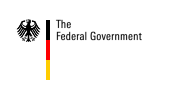The Republic of Italy is composed of 20 regions, each of which has its own government. The regions are divided into 108 provinces, each again divided into municipalities. There are also a further five regions (Valle d'Aosta, Friuli-Venezia Giulia, Sardegna, Sicilia and Trentino-South Tyrol) which enjoy a special status ("statuto speziale") that grants them a great degree of autonomy.
The official language is Italian. German, Ladin, French and Slovenian are spoken as minority languages.
Italy is 301,277 sq. km in area and has a population of 58.462 million, 2.4 million being foreign citizens.
The majority of the population is Roman Catholic. There are also 1 million Muslims, some 120,000 Buddhists, around 50,000 Protestants and about 40,000 Jews. The capital is Rome.
Italy has been a member of the UN since 1955, of NATO since 1949, and of the EU since 1951. It is also a member of the OSCE (1973), the Council of Europe (1949), and of the IMF and the World Bank (1945).
G8
Italy was one of the six states present at the foundation of the Group in France in 1975. Since then it has held the presidency four times: 1980 (Venice), 1987 (Venice), 1994 (Naples) and 2001 (Genoa).
>> Genoa G8 communiqué
>> Genoa G7 statement
Top
Political system
Italy is a parliamentary democracy with a bicameral legislature.
The Head of State is the President of the Republic. He is elected for a term of 7 years by the two chambers in joint session together with 58 representatives of the regions.
The Prime Minister, who heads the government, is appointed by the President and confirmed in office by both parliamentary chambers. These are the Chamber of Deputies and the Senate. The two chambers are elected for five years and are equal in rights.
The government, called the Council of Ministers, is appointed by the Prime Minister with the agreement of the President. The general lines of government policy are decided not by the Prime Minister, but by the Council of Ministers as a whole.
The Prime Minister since 2006 has been Romano Prodi. The President is Giorgio Napolitano, also since 2006.
Under the Constitution of 1948, Italy is a decentralised unitary state. A constitutional reform in 2001 provided for even greater decentralisation.
Top
Economy
Recent years have seen measures taken to deregulate and privatize the Italian economy. Italian GDP remained unchanged in 2005, while growth in the previous year (2004) was 1.1%.
Facts:
- Unemployment in 2005 was 7.9%. Unemployment among women and young people is around 25%.
- Gross Domestic Product (GDP) in 2005: 1,417.24 bn EUR
- GDP per capita in 2005: 24,214 EUR
- Budget deficit as percentage of GDP in 2005: 4.1%
- Public debt as percentage of GDP in 2005: 106.4%
- Inflationrate in 2005: 2.2%
Top
Foreign trade
In 2005 the trade deficit was 10.4 bn EUR, exports growing by 3.7 per cent and imports by 6.8 per cent.
